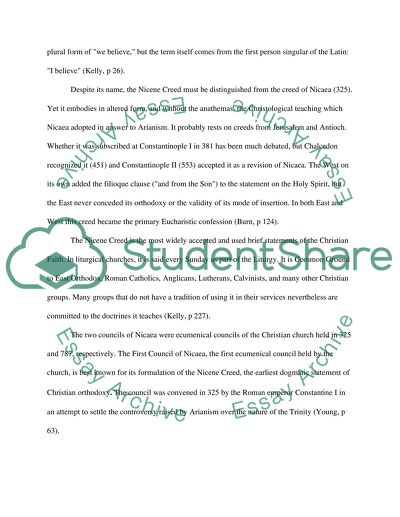Cite this document
(“A Creed Agreed: An Overview of the Past and Present of the Nicene Essay”, n.d.)
A Creed Agreed: An Overview of the Past and Present of the Nicene Essay. Retrieved from https://studentshare.org/religion-and-theology/1505433-what-factors-led-to-the-creation-of-the-nicene-creed
A Creed Agreed: An Overview of the Past and Present of the Nicene Essay. Retrieved from https://studentshare.org/religion-and-theology/1505433-what-factors-led-to-the-creation-of-the-nicene-creed
(A Creed Agreed: An Overview of the Past and Present of the Nicene Essay)
A Creed Agreed: An Overview of the Past and Present of the Nicene Essay. https://studentshare.org/religion-and-theology/1505433-what-factors-led-to-the-creation-of-the-nicene-creed.
A Creed Agreed: An Overview of the Past and Present of the Nicene Essay. https://studentshare.org/religion-and-theology/1505433-what-factors-led-to-the-creation-of-the-nicene-creed.
“A Creed Agreed: An Overview of the Past and Present of the Nicene Essay”, n.d. https://studentshare.org/religion-and-theology/1505433-what-factors-led-to-the-creation-of-the-nicene-creed.


